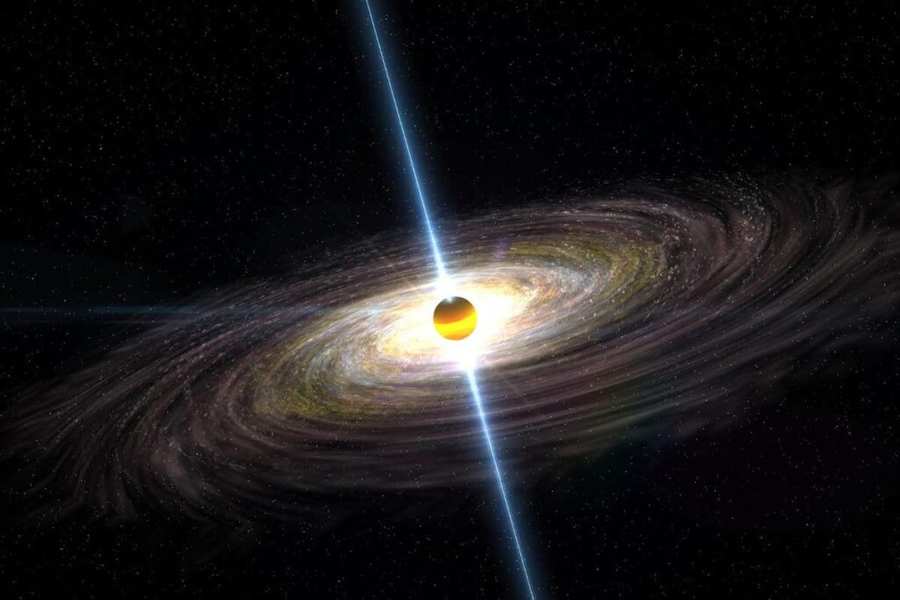Introduction to Supermassive Black Holes
Supermassive black holes are fascinating astronomical objects that exist at the centers of galaxies. A newly discovered supermassive black hole, located in the galaxy LID-568, is challenging our understanding of black hole behavior. This black hole was formed just 1.5 billion years after the Big Bang and is consuming material at a staggering pace, exceeding what scientists thought was possible.
What Is the Eddington Limit?
Definition of the Eddington Limit
The Eddington limit is an important rule in astrophysics that describes the maximum rate at which a black hole can absorb matter while maintaining its structure. When black holes draw in material, that material doesn’t just plunge straight in. Instead, it spirals around the black hole, forming what’s known as an accretion disk.
How the Eddington Limit Works
As this material moves closer to the black hole, it generates a tremendous amount of energy that is released as light and radiation. Eventually, this energy creates radiation pressure that pushes against the incoming material. When the pressure becomes strong enough, it slows down or even stops further accretion. This mechanism sets a cap on how fast a black hole can grow under normal circumstances.
LID-568’s Remarkable Growth
The black hole at the center of galaxy LID-568 is currently breaking this limit. It is consuming matter so quickly that it emits far more energy than expected. Telescopes like the James Webb Space Telescope (JWST) and observations from the Chandra X-ray Observatory have confirmed this extraordinary feeding behavior.
The Mystery Surrounding Fast-growing Black Holes
Formation of Supermassive Black Holes
A major question in astrophysics is how supermassive black holes, which can have masses millions or even billions of times greater than that of our Sun, formed so rapidly in the early universe. Traditional models suggest that these black holes grow slowly over time, absorbing matter at or below the Eddington limit.
New Insights from LID-568
The discovery of LID-568 indicates that some supermassive black holes might undergo dramatic phases of growth known as super-Eddington accretion. This means that instead of the gradual accumulation of material, some black holes could feast on vast amounts of material in short bursts.
This finding supports the theory that these early black holes may not have formed from collapsing stars, as has been previously thought. Instead, they may have grown quickly due to these intense feeding episodes.
A Fortunate Discovery
Importance of Timing
Finding a black hole like LID-568 during such an extreme feeding event is rare. The lead researcher, Hyewon Suh from the Gemini Observatory, and her team were extremely fortunate to observe LID-568 right at the peak of its feeding frenzy. Since these super-Eddington phases are short-lived, most black holes that experienced such growth in the past no longer exhibit this behavior.
Thus, LID-568 has become a crucial target for future research, providing a unique opportunity for astronomers to collect more data on how black holes evolve.
Implications for Black Hole Research
Possible Changes to Theories
The findings from LID-568 could change the way we think about black hole evolution. If super-Eddington accretion plays a significant role in the formation of the universe’s first and largest black holes, it offers a clearer explanation for their rapid growth.
Future Research Directions
Going forward, astronomers aim to use the JWST and upcoming next-generation telescopes to find more black holes that are in similar states of extreme growth. This research could help scientists refine their models and better understand how black holes interact with their surrounding environments, as well as how galaxies formed alongside them in the early universe.
Conclusion
The discovery of the supermassive black hole in galaxy LID-568 is reshaping our understanding of black hole formation and growth. By breaking through the Eddington limit, this black hole may provide key insights into how these cosmic giants evolved during the infancy of the universe. With ongoing observations and future research initiatives, scientists are excited to uncover more about these compelling astronomical phenomena.
